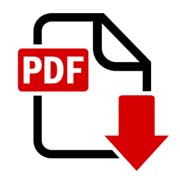| Year |
2013 |
| Volume/Issue/Review Month |
Vol. - VI | Spl. Issue I | January |
| Title |
Different Tools & Techniques for Quality Improvement in Professional Education |
| Authors |
Sanjeev Narayan Bal , Manoj Kumar Mahanta |
| Broad area |
Different Tools & Techniques for Quality Improvement in Professional Education
|
| Abstract |
The purpose of this paper is to determine the effectiveness of various teaching
methods used for teaching students at graduate and post graduate levels. Two
hundred technical students were interviewed about their perceptions of best
and effective teaching methods and the reason for that. Most of the students
rated lecture method as the best teaching method. Reasons included; teacher
provides all knowledge related to topic, saving of time, students attentively
listen to lectures and take notes, etc. Group discussion was rated as the second
best method of teaching. The Project-based collaborative learning is an active,
problem-centered approach to teaching and learning. As the name implies, it
is a fusion of two related approaches- project-based learning and collaborative
learning. Use of writing in engineering courses can help in achieving both
technical depth and educational breadth in engineering programs. Engineering
students can use words in describing concepts so that they will be encouraged
to develop a linear, logical, and connected set of ideas in understanding them.
Each student is thus forced to think carefully and in detail. |
| Description |
Teaching and learning are the two sides of a coin. The literature on teaching is crammed full of well researched ways that teachers can present content and skills that will enhance the opportunities for students to learn. It is equally filled with suggest |
| File |
 |
| Referenceses |
- Benson. L., Schroeder, P., Lantz, C, and Bird, M. (n.d.).
- Student Perceptions of Effective Professors.
- Braskamp, L. A. (2000). Toward a more holistic approach
- to assessing faculty as teachers. In K. E. Ryan
- (Ed.), Evaluating teaching in higher education: A
- vision for the future. New directions for teaching and
- learning, 83, 109-123. San Francisco, Ca: Jossey-
- Bass.
- Cavalier R (2008) “Campus conversations: modeling a
- diverse democracy through deliberative polling.”
- Diversity and Democracy.
- Cavalier R, Bridges M (2007) “Polling for an Educated
- Citizenry.” Chronicle of Higher Education, January
- 2007 (volume 53, issue 20).
- Chang, T.S. (2001). The effect of system administration
- on faculty attitudes toward student ratings. Hualien,
- Taiwan: National Hualien Teachers College.
- Cuseo, J. (n.d.). The case for student evaluation of college
- courses. Policy Center on the First Year of College
- Deggs, D.M., Machtmes. K.L., and Johnson.E. (August
- 2008). The Significance of Teaching Perspectives
- Among Academic Disciplines. College Teaching
- Methods & Styles Journal. 4(8). 1-7
- Fink. L. D. (n.d.).Ideas on Faculty Assessment &
- Professional Development. Retrieved from http://
- www.ncrel.org/sdrs
- Hamm, P.H. (Rev.2008). Teaching and Persuasive
- Communication: Class Presentation Skills. The
- Harriet W. Sheridan Center for Teaching and Learning
- Project-based learning. In Wikipedia, the free
- encyclopedia.
- Tinto V (Eds.), Collaborative Learning: A Sourcebook for
- Higher Education. National Center on
- Postsecondary Teaching, Learning, and Assessment
- at Pennsylvania State University
|